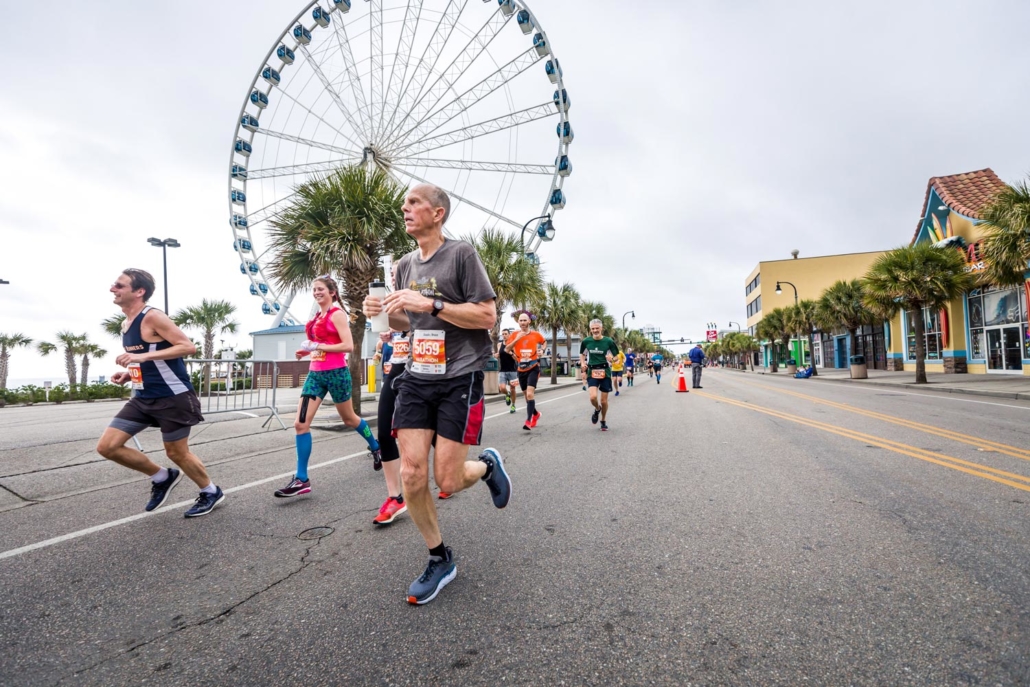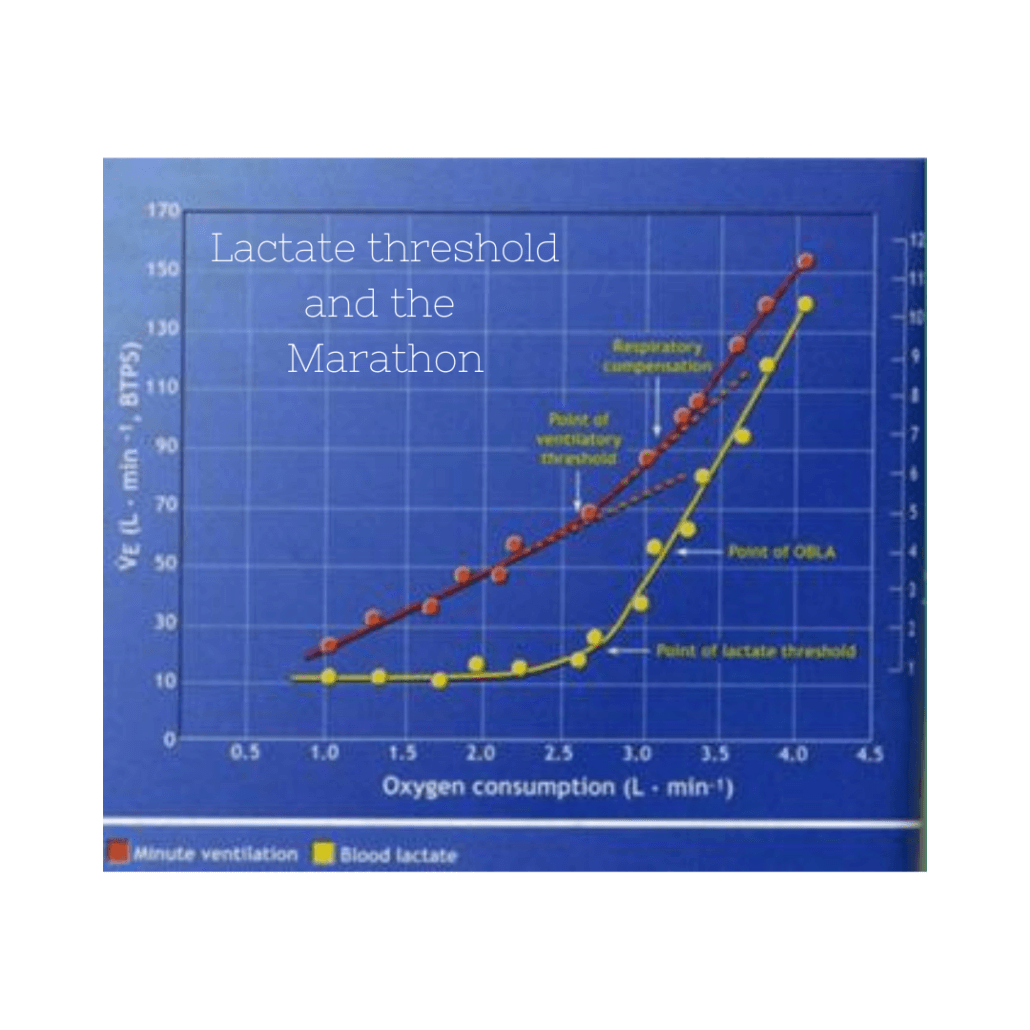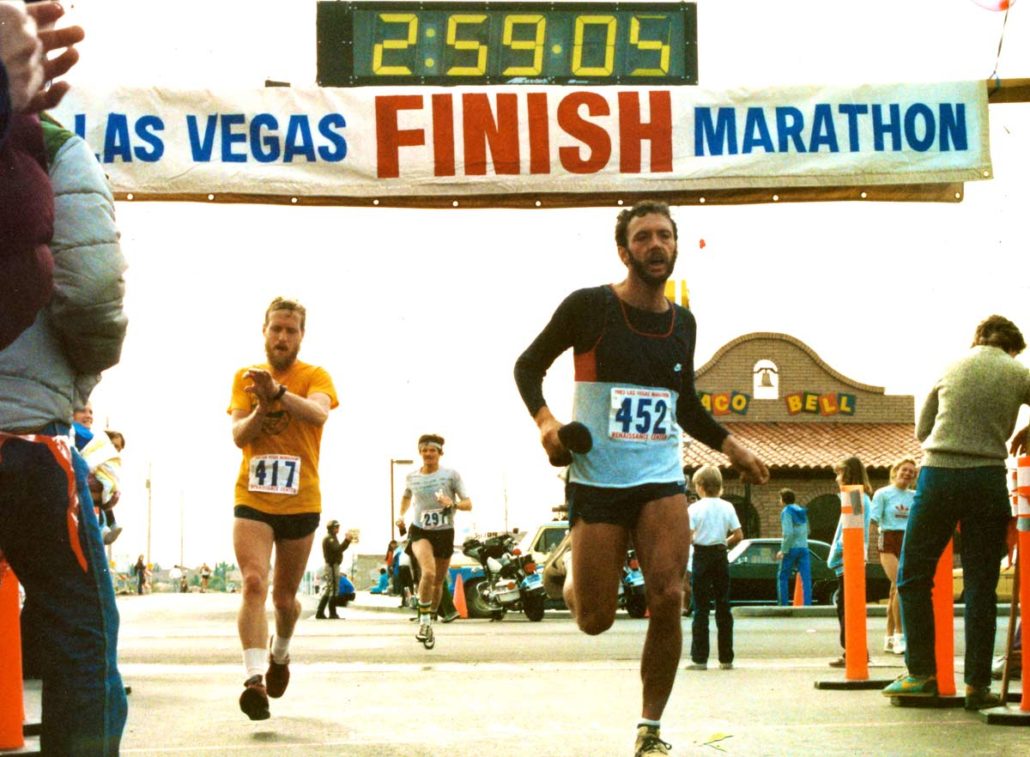Training by Feel

Podcast: Play in new window | Download
It is interesting how our experiences shape our philosophy over time. My earliest example was when I started running cross country in high school. I ran track in junior high but wasn’t bothered with cross country. My coach, Mike Noll, was very pace-oriented with an emphasis on negative splits and since it was really my first experience, though that’s how it was supposed to be. The kids that ran in middle school were basically taught to blast off and see how well you could hold on. They were able to get away with it because the distance was a mile and a half. In high school, the distance doubled, which meant that there was twice as long for things to go wrong.
We have all gone out way too hard before and recognize that the time you can lose is on an exponential level!
Needless to say, my college coach was very similar, as are Kevin and Keith. All have different nuances to their approach, but the bases were all very similar. Fortunately, I thrived under those theories and have taken the same approach to all of you who listen to me. When I was a part of the ODP, I had many, many teammates from all different types of programs. And like anything, people struggled with adapting to this type of philosophy, while others thrived. Truth be told, I feel like the people who thrived were the people like myself.
We were moderately talented but really had to execute perfectly if we were to compete at the level we did. So, we had to learn paces by running paces- over and over and over again.
Now, a couple of years ago, I made a post saying as much. A prominent runner replied, “Why not just train them to race?” Now, to be fair, I really don’t think they were being facetious. I genuinely think they were asking as a type of “well why wouldn’t you just do this? I thought about it for a long time. At their level, they could train to win a major race. I was not there, and most of my athletes aren’t at that level. Many of you are training to beat yourself or to qualify for Boston. Things like that. I was trying to run PR’s, qualify for World teams, and those types of things.
So, I sense it already, “aren’t you selling yourself short?”
No, I don’t think so and that is really what I want to cover. I don’t feel like I did, because I feel like when the situation did arise, I had the killer instinct and disregarded pace when I was late in a competitive situation. But it was because of knowing where I was at with pace that put me in the situation, to begin with! I will give you two examples of races, both of which were in the same training cycle.
- In 2011, I and a couple of teammates were on the training cycle. Our first race was a half marathon in Naples, Florida. I had never heard of this race before, but somehow everyone and their brother were at this race! So, it was still kinda early in our block and we were training for a pretty fast go. We were all trying to run under 1:04 for the half- pretty close to 4:50 pace per mile. At Naples, I tried to race the crew. There were some guys there like I described at the start. Go out hard and hang on. I was naive and thought it might work and I wanted to race the competition. I knew we were fast, but I disregarded it. By 10k, I was fried. I spent the second half of the race watching people pull away from me like I was stuck in peanut butter. It was pretty disheartening because it was a wasted opportunity.
- Now, about four weeks later, I was in New Orleans for the Rock n Roll half marathon. I had two other teammates who were trying to get Trials qualifiers by running a fast enough half time. So, I went in more fit than I was previously, but having no intention to race the leaders. This time the gun goes off and we settle into the pace right away. This time it felt like a jog, but we were dialed in. The two leaders had jumped out early, but by four miles the lead had stayed the same distance. I knew we were on the pace and it felt comfortable. So, I started dialing in just a little bit. My 4:55 miles crept down to 4:50, then I hit 10 miles and I was at my PR! I think it was 48:35 at 10 miles. I hadn’t quite caught the two leaders at this point and it was a critical junction. I thought- Do I have enough gas to get them? Do I have enough time to catch them if I stay at this pace? My decision/reaction was I felt like I was just off the edge enough to push for 15 more minutes. That’s about what I had left to race. So, I buckled down, caught the two leaders, and dropped the one. Then it came down to a sprint the last 800 meters. I was nipped at the line, but the guy who beat me was an NCAA champ, so it wasn’t like I let him have it. The result: A new PR of 1:03:58.
Two races, within a month, with two dramatically different results.
I know what many of you are thinking- this sounds like I am making the case for training by feeling more than training by pace. To that, I would disagree. I really feel like because I knew my paces inside and out, I, as The Gambler used to say, “Know when to hold’em. Know when to fold ’em. Know when to walk away and know when to run.”
The reason is that regardless of the data you use- heart rate, pace, or power, what are you really measuring? You are measuring an intensity level, or how hard something is. I prefer pace because it’s what I have always used and at the end of the day, many of you are training to run certain times, so pace you need to be able to run a certain time for a given distance. But here is the problem.
We put so much emphasis on the data, that we don’t internalize how that effort feels.
We get so wrapped up in hitting the splits that so many of us just say, “Well, I hit that pace so I’m good for the marathon.” The opposite is also true. Or they get into a situation of just going pedal to the medal because they feel that they can, or should.
The point here is that running paces and sticking to paces lets you internalize better how those paces feel over an array of circumstances. For me, I have been doing it for decades and so I know pretty close (without the help of a watch) if I am over the target, or not. But, it was decades of adhering to pace, adjusting as I progressed over time, and then listening to my body on how those paces felt that helped me “race” when the time came. I learned how long I could extend an effort for before I was going to pay the price. I could make better calculations on what moves to cover or when to let it play out. You might get lucky once in a while when just throwing eggs against the wall, but most of the time they are just going to crack under the pressure.
A couple of last things I want to mention here. One is that I am aware that there is a time to really push a workout. To take yourself to the well a little bit. For us, that was always The Simulator and the second half of the 2×6 mile. For you, it might be one of the 16 milers and one of the 10 Mile tempos.
The problem is that you can only go to the well a few times before the bucket comes up dry. Do you want that to be during training?
Probably not. The second is that I like the other data like HR and Power, but I am yet to be convinced that they should be your training guide. Where I like them better is data that you can look back and reflect on. Where you can see trends and aid in adjustments. That’s just me and I know many of you have your own strong feelings.
Ultimately though, as a coach, I want to get you as an athlete to be at this place in your training- Allowing the pace to be dictated by the effort and not the other way around. Easy runs are the perfect example. Let’s say your easy range is 8-9:30 pace per mile. Yesterday you did a hard workout, had little sleep, and are stressed from a project due at work. In an ideal situation, you’d run at an easy effort and if that landed at 9:15 per mile, so be it. Where many of you are at is you see 8:00/mile and force that pace even though the effort is significantly higher than easy.
To get to this point, I want to teach new runners to learn control by strictly adhering to paces, especially early in a training cycle when things are easier.
This means no cheating down your easy runs or any of your workouts.
The temptation is there, but resist! This does mean you have to pay close attention to the data. Things like setting up your ranges on your watch to annoy the hell out you may be a necessary evil. But, this only works if you begin to pay attention to your body, how you feel, and what’s going on internally to begin associating how you react to the paces. Then, over time, you begin to know if you are creeping paces down. If you are running faster, then it’s a conscious effort, not because Right Said Fred is blasting your ear pods. As you are more experienced you can shift the reliance on the technology to reliance on your effort and be really close. If you can get to that point, then that’s where you can really make breakthroughs in overall pacing and being more competitive. You will be able to make much better race decisions and have confidence in yourself.
Is this clear as mud?
Learn your paces by internalizing efforts. The end result is that you, over time, can put less reliance on the technology measuring the intensity and putting it in the best computer ever made- your brain!




